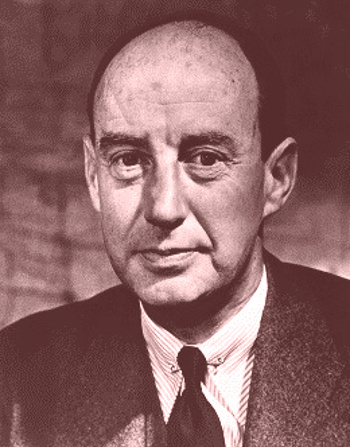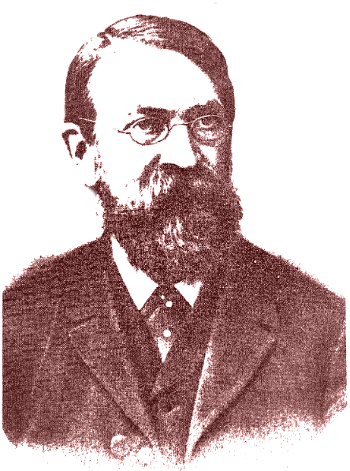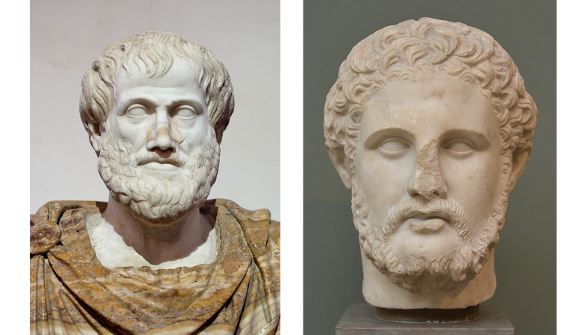Worker Ants of Science
May 18, 2020
The original purpose of the
vocabulary portion of the
SAT (known as the
Scholastic Aptitude Test when I was in
high school) was to
evaluate how
well-read a
student might be, since
reading books introduces a person to new
words; and, reading hefty
tomes introduces readers to heavyweight words. Eventually, this test became a
memorization game and another manifestation of
income inequality in which
children from
wealthier families would have
study guides and SAT
preparation courses that other children didn't have.
One SAT-type word that I learned in high school was
hagiography. The word,
hagiography, derives from the
Greek words, hagios (ἅγιος,
holy) and graphia (γραφια,
writing), and hagiographies were originally idealized and
adulatory biographies of
saints. Today's hagiographies recall the greatness of present day
saints; namely,
celebrities,
sports stars; and, occasionally,
scientists.
Numerous biographies have been written about
Albert Einstein (1879-1955),[1] and I read one of these in high school. At that time, I also read a biography of
Adlai Stevenson (1900-1965). If you've never heard of Stevenson, this illustrates the idea that
runners-up are usually not remembered.[2] Stevenson was the
Democratic candidate for the
US Presidency in both 1952 and 1956, each time being defeated in a
landslide by
Republican,
Dwight D. Eisenhower. After the 1960
election of
John F. Kennedy, Stevenson served as
Ambassador to the United Nations, which included the period of the
Cuban Missile Crisis.

Adlai Stevenson (1900-1965).
Stevenson is one of many examples of the need for gun safety. In 1912, when he was twelve years old, Stevenson accidentally killed a friend with an inadvertently loaded rifle.
Stevenson was understandably devastated by the accident. In a letter to a family who experienced the same accident, Stevenson wrote that the person "...must now live for two."
(Wikimedia Commons image, modified for artistic effect)
There are many biographies and
autobiographies of notables in
STEM fields. I prefer
print media, so I have
bookshelves filled with books, and those shelves hold the following examples:
• Vannevar Bush (1890-1974) - Endless Frontier: Vannevar Bush, Engineer of the American Century by Gregg Pascal Zachary (1997).
• Albert Einstein (1879-1955) - Einstein the Life and Times by Ronald W. Clark (1971); Einstein and the Generations of Science by Lewis S. Feuer (1989).
• Paul Dirac (1902-1984) - The Strangest Man: The Hidden Life of Paul Dirac by Graham Farmelo (2009).
• Richard Feynman (1918-1988) - Surely You're Joking, Mr. Feynman! (Adventures of a Curious Character) by Richard P. Feynman and Ralph Leighton (1997); "What Do You Care What Other People Think?": Further Adventures of a Curious Character by Richard P. Feynman and Ralph Leighton (2005).
Bernard Lovell (1913-2012) - The story of Jodrell Bank by Bernard Lovell (1968).
• John Forbes Nash, Jr. (1928-2015) - A Beautiful Mind by Sylvia Nasar (1998).
• J. Robert Oppenheimer (1904-1967) - J. Robert Oppenheimer: Shatterer of Worlds by Peter Goodchild (1985).
• Linus Pauling (1901-1994) - Linus Pauling: A Man and His Science by Anthony Serafini (1989).
Srinivasa Ramanujan (1887-1920) - The Man Who Knew Infinity: A Life of the Genius Ramanujan by Robert Kanigel (1991).
• Ernest Rutherford (1871-1937) - A Force of Nature: The Frontier Genius of Ernest Rutherford by Richard Reeves (2007).
• Herbert A. Simon (1916-2001) - Models of My Life by Herbert A Simon (1996).
• John Archibald Wheeler (1911-2008) - Geons, Black Holes, and Quantum Foam: A Life in Physics by Kenneth Ford and John Archibald Wheeler (1998).
Scientific ideas are not developed in
isolation. We all have (or, should have) a
periodic table affixed to our
laboratory wall, and we use the powerful
mathematical tools developed over the
centuries.
Newton is usually credited with the expression of this idea, called "
standing on the shoulders of giants." Newton wrote in a 1676 letter to
Robert Hooke, "If I have seen further it is by standing on ye sholders of Giants." This argument was apparently first used by
Bernard of Chartres. It's rendered in
Latin as "...quasi nanos, gigantium humeris insidentes..." ("...like
dwarfs on the
shoulders of
giants").
Einstein was influenced in his creation of
relativity by
Ernst Mach's book, "The Science of Mechanics," in which Mach criticized Newton's idea that an
absolute space exists.[3] This book contains what's called
Mach's principle, one statement of which is that local
physical laws are determined by the large-scale
structure of the
universe. As a student walking from class to class, I thought about how Mach's principle meant that my
body's inertia arose from
interaction with everything else in the universe.

Ernst Mach (1838-1916).
Mach is best known for his work on supersonic fluid mechanics in which he experimentally confirmed his theory that a conical shock wave will exist at the apex of a supersonic projectile.
The ratio of flow velocity past a boundary to the local speed of sound is called the Mach number in his honor.
(From the front piece of the English translation of "The Science of Mechanics," via The Internet Archive, modified for artistic effect.[3])
In his 1962 book, "
The Structure of Scientific Revolutions," Thomas Kuhn wrote about the difference between the science practiced by those scientists who are the subjects of published biographies and the rest of us. [5-6] This book gives its readers some insight into the scientific method, and it adds the word, "paradigm," to their SAT vocabulary list if it isn't already there. I wrote about the 50th anniversary of its publication in a
previous article (Fifty Years of Paradigm Shifting, February 25, 2013).
Kuhn's book argues that there are two types of
science. There's the "revolutionary" science done by those who have a different way of thinking about
nature than that of other scientists. The practitioners of revolutionary science are the subjects of biographies. A ready example would be
Nicolas Copernicus (1473-1543), who proposed a
heliocentric solar system that was better at
prediction of
planetary positions than the
geocentric model. The other type of science, practiced by more than 99% of scientists, is "normal" science - Useful, but not revolutionary.
Nathan Hagen of the
Center for Optical Research and Education,
Utsunomiya University (Utsunomiya, Japan) has recently posted a
paper on
arXiv that examines many aspects our tendency to elevate some scientists to
hero status, how those scientists became heroes, and the
plight of the ordinary scientist practicing ordinary science.[6] He writes that such "
hero worship" arises from the "great man theory," the central
thesis of which is that some people have
intellectual and
interpersonal abilities that are far from ordinary, so these people do things that have a lasting influence.[6] There is also the tendency to place
philosophical thinking, such as
theory-making, above experimental pursuits and practical pursuits such as
engineering.[6]
While Hagen admits that the heroes of science were great
communicators, both in the style of their
scientific publications and their
lectures, he ascribes most of their success to
luck. Such luck takes the form of being born into the right family, a family having
educated parents with a good
income, and having the right scientific
mentors early in their
career.[6] He used the example of
Alexander the Great, who was tutored by
Aristotle, and whose father,
Philip II of Macedonia, was a
monarch who had already assembled a huge
army.[6]

Brains and brawn, the two sides of Alexander the Great - Aristotle (left) and Philip II of Macedonia (right). Alexander was born in 356 BC, he was was tutored by Aristotle until he was sixteen; and, at twenty years of age, he succeeded his father Philip II, who was assassinated. He lead the Greeks in the conquest of Persia, eventually creating an empire that reached into India. Alexander enabled the spread of Greek culture throughout antiquity. (Left image, a Roman marble bust of Aristotle, copied from a Greek bronze original by Lysippos from 330 BC, now at the Museo nazionale romano di palazzo Altemps, as photographed by Jastrow. Right image, Roman copy of Greek original bust of Phillip II of Macedonia, now at the Ny Carlsberg Glyptotek (Copenhagen, Denmark), photographed by Richard Mortel. Both images from Wikimedia Commons.)
one important skill that scientific heroes have is the ability to select the
right problem to solve. Deciding what's really worth working on is what distinguishes great scientists from good scientists.[6] Hagen quotes
science sociologist,
Robert Merton, as writing,
"Almost to a man [Nobel laureates have in interviews laid] great emphasis on the importance of problem-finding, not only problem-solving. They [emphasize the
need to seize] upon problems that are of fundamental importance [in contrast to the pedestrian work involving] endless detail or work just to improve accuracy...."[6]
References:
- Galina Weinstein, "Biographies of Albert Einstein -- Mastermind of Theoretical Physics," arXiv, May 24, 2012.
- Alben W. Barkley (1877-1956) is similarly unknown. Barkley was 35th vice president of the United States under Harry Truman from 1949 to 1953. As I remember, he was in a credit card commercial that made light of the fact that no one remembered who he was.
- Ernst Mach, "The Science of Mechanics," Thomas J. McCormack, Trans., The Open Court Publishing Co. (Chicago: 1919), via The Internet Archive. This is a translation of the 1887 German original.
- 1Thomas S. Kuhn, "The Structure of Scientific Revolutions: 50th Anniversary Edition," University Of Chicago Press (Fourth Edition edition, April 30, 2012), ISBN-13: 978-0226458120, 264 pages (via Amazon).
- 4Matthew C. Rees, "The Structure of Scientific Revolutions at Fifty," The New Atlantis, no. 37 (Fall 2012), pp. 71-86.
- Nathan Hagen, "The problem of scientific greatness and the role of ordinary scientists," arXiv, March 9, 2020.
Linked Keywords: Vocabulary; SAT; high school (United States); evaluation; evaluate; well-read; student; reading (process); book; word; tome; memorization; income inequality; child; children; wealth; family; study guide; test preparation; preparation course; hagiography; Greek language; sacred; holy; adulatory; biography; saint; celebrity; athlete; sports star; scientist; Albert Einstein (1879-1955); Adlai Stevenson (1900-1965); runner-up; Democratic Party (United States); candidate; President of the United States; US Presidency; landslide victory; Republican Party (United States); Dwight D. Eisenhower; election; John F. Kennedy; Ambassador to the United Nations; Cuban Missile Crisis; gun safety; accident; death; kill; friend; ammunition; loaded; rifle; letter (message); Wikimedia Commons; autobiography; STEM field; printing; print; mass media; bookcase; bookshelf; Vannevar Bush (1890-1974); Paul Dirac (1902-1984); Richard Feynman (1918-1988); Bernard Lovell (1913-2012); John Forbes Nash, Jr. (1928-2015); J. Robert Oppenheimer (1904-1967); Linus Pauling (1901-1994); Srinivasa Ramanujan (1887-1920); Ernest Rutherford (1871-1937); Herbert A. Simon (1916-2001); John Archibald Wheeler (1911-2008); science; scientific; idea; social isolation; periodic table; laboratory; wall; mathematics; mathematical tool; century; centuries; Isaac Newton; standing on the shoulders of giants; Robert Hooke; Bernard of Chartres; Latin; dwarfism; dwarf; shoulder; giant; theory of relativity; Ernst Mach (1838-1916); absolute space; Mach's principle; physical law; structure; universe; human body; inertia; interaction; supersonic speed; fluid mechanics; experiment; experimental; theory; cone; conical; shock wave; apex (geometry); projectile; ratio; flow velocity; boundary; speed of sound; Mach number; English language; translation; The Internet Archive; The Structure of Scientific Revolutions; Thomas Kuhn; scientific method; paradigm; anniversary; nature; Nicolas Copernicus (1473-1543); heliocentrism; heliocentric solar system; prediction; planet; planetary; geocentric model; Nathan Hagen; Center for Optical Research and Education; Utsunomiya University (Utsunomiya, Japan); scientific literature; paper; arXiv; hero; plight; apotheosis; hero worship; hypothesis; thesis; intellectual; social; interpersonal; philosophy; philosophical; theory-making; engineering; communication; communicator; scientific publication; lecture; luck; education; educated; parent; income; mentor; career; Alexander the Great; Aristotle; Philip II of Macedonia; monarch; army; intellect; brain; physical strength; brawn; tutor; assassination; assassinated; Ancient Greece; Greeks; conquest; Persia; empire; India; Greek culture; classical antiquity; Ancient Rome; Roman; marble; bust (sculpture); bronze; Lysippos; Museo nazionale romano di palazzo Altemps; photograph; Jastrow; Ny Carlsberg Glyptotek (Copenhagen, Denmark); Richard Mortel; sociology of scientific knowledge; science sociologist; Robert K. Merton; Nobel laureate; interview; accuracy.